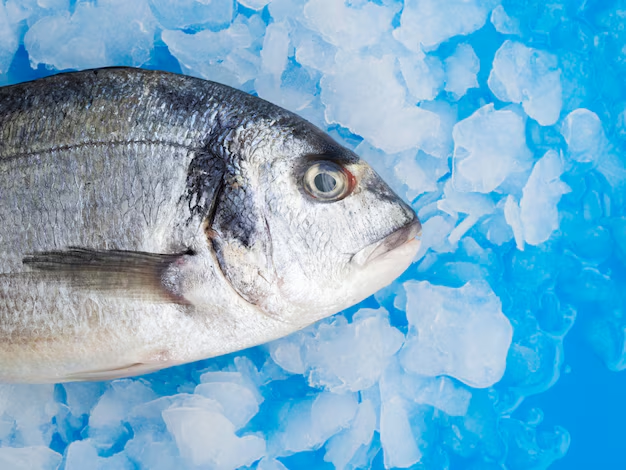How Long Can You Safely Keep Tuna in the Refrigerator?
Tuna, a popular and versatile fish, finds its way into many dishes worldwide. Whether it's in sushi, salads, or sandwiches, its unique flavor and nutritional benefits make it a staple in numerous households. However, like all perishable foods, tuna has a shelf life, and storing it correctly is crucial for safety and quality. So, how long can you really keep tuna in the refrigerator before it poses a risk? Let’s dive deep into the refrigerated life of tuna to ensure you’re enjoying it safely and deliciously.
🕒 The Shelf Life of Tuna in the Refrigerator
Fresh Tuna
Freshness is key when it comes to fish. Fresh tuna can generally be kept in the refrigerator for 1 to 2 days. For optimal freshness, it should be stored in its original packaging or wrapped securely in plastic wrap or aluminum foil. This short storage time is due to the high moisture content of fish, which can promote bacterial growth if not consumed quickly.
Cooked Tuna
Once you've cooked your tuna, the clock resets slightly. Cooked tuna can last in the refrigerator for about 3 to 4 days. As always, proper storage is vital; use airtight containers to keep the fish fresh longer and to prevent it from absorbing odors from other foods.
Canned Tuna
Canned tuna brings longevity to the table. Once opened, canned tuna should be transferred to a non-metal container and can be kept for 3 to 5 days in the refrigerator. Unopened, canned tuna can last in your pantry for years, making it a convenient and reliable source of protein.
🔍 Factors Influencing Tuna’s Shelf Life
Temperature Control
Refrigerator temperature plays a pivotal role in prolonging the freshness of tuna. It should be kept at or below 40°F (4°C). Any deviation can lead to faster spoilage, so it’s beneficial to occasionally check your fridge’s temperature.
Storage Methods
How tuna is stored will determine how long it remains safe and flavorful. Here are some best practices:
- Wrap it right: Use airtight storage solutions, such as tight-sealing containers or heavy-duty plastic wraps.
- Double-wrap for freshness: For fresh tuna, double-wrapping in both plastic wrap and foil can help retain its natural moisture and flavor.
- No air exposure: Limiting exposure to air reduces oxidation and bacterial growth on the surface of the fish.
🛑 Signs of Spoilage
Recognizing spoilage is crucial. Consuming spoiled fish can lead to foodborne illnesses. Here are some telltale signs:
- Smell: A sour or ammonia-like odor is a strong indicator that your tuna has gone bad.
- Texture: If the tuna feels slimy to the touch, it's time to dispose of it.
- Color: Discoloration towards a dull or brownish hue suggests deterioration.
- Taste: While tasting is the last line of defense, any unexpected sour or foul taste means the fish is no longer safe to consume.
🌡️ Safe Service and Consumption Tips
Quick Tips for Serving Tuna Safely:
- Avoid cross-contamination: Use separate utensils and cutting boards for raw and cooked tuna.
- Immediate refrigeration: Promptly refrigerate leftovers to minimize time in the temperature danger zone where bacteria thrive.
- Defrost with care: If using frozen tuna, defrost in the refrigerator, not on the counter.
❄️ Freezing as an Alternative
Freezers extend the life of foods significantly. For tuna, freezing can be an excellent option to prolong shelf life beyond refrigeration limits.
How to Freeze Tuna:
- Wrap and Seal: For fresh or cooked tuna, wrap it in plastic, followed by aluminum foil or a freezer bag. Remove as much air as possible.
- Label: Always label with the date of freezing to track freshness.
- Duration: Frozen tuna retains its best quality for approximately two to three months. Beyond this, it may still be safe but might lose flavor and texture.
📝 Quick Reference Guide: Tuna Storage Tips
Here’s a handy summary to ensure you're getting the most from your tuna storage.
- Fresh Tuna: Use within 1-2 days.
- Cooked Tuna: Store for 3-4 days.
- Canned Tuna (opened): Good for 3-5 days.
- General Storage Temp: 40°F (4°C) or below.
Use the following emojis for easy skimming and reminders:
- ❄️ Frozen tuna: best for 2-3 months.
- 🚫 Avoid temperature fluctuation.
- ⏲️ Time is of the essence; consume quickly.
⚠️ Health and Safety Considerations
While proper storage significantly reduces risk, always prioritize safety. Consuming high-quality, well-preserved tuna maximizes health benefits without adverse effects. Being vigilant about storage practices not only protects your health but also respects the quality of your food.
In Closing
Understanding how to properly store tuna offers peace of mind and enhances culinary enjoyment. Remember, freshness is fleeting, and how you manage storage can have a profound impact. Always rely on your senses and good practices to determine your tuna’s edibility. By storing your tuna with care, you’ll enjoy its flavors at their peak, reducing food waste and maximizing your culinary delight. Stay mindful, stay safe, and most importantly, enjoy your tuna dishes fully!
